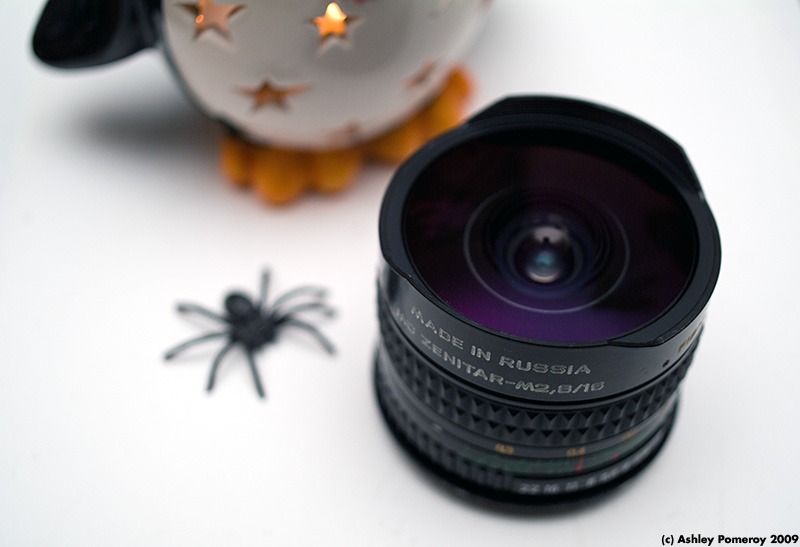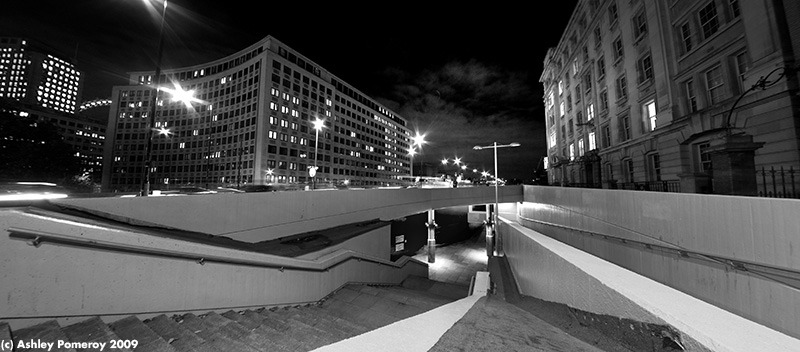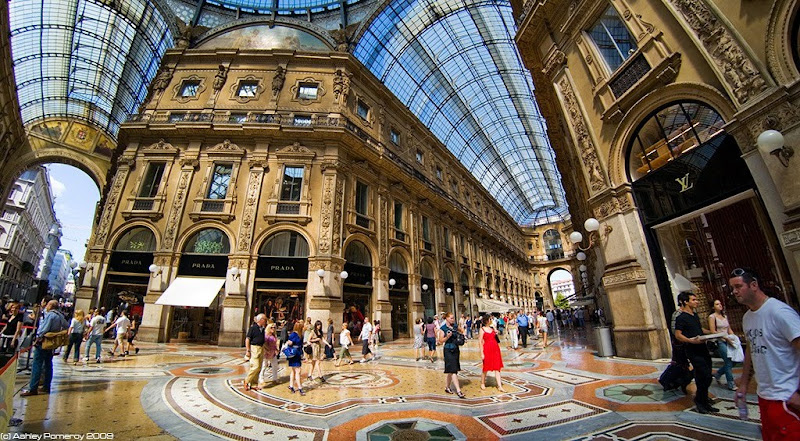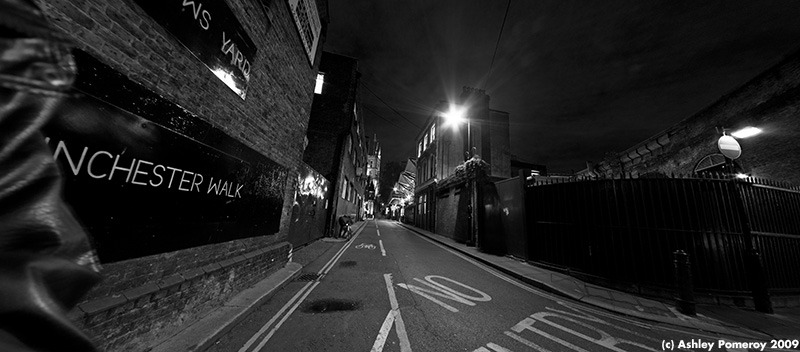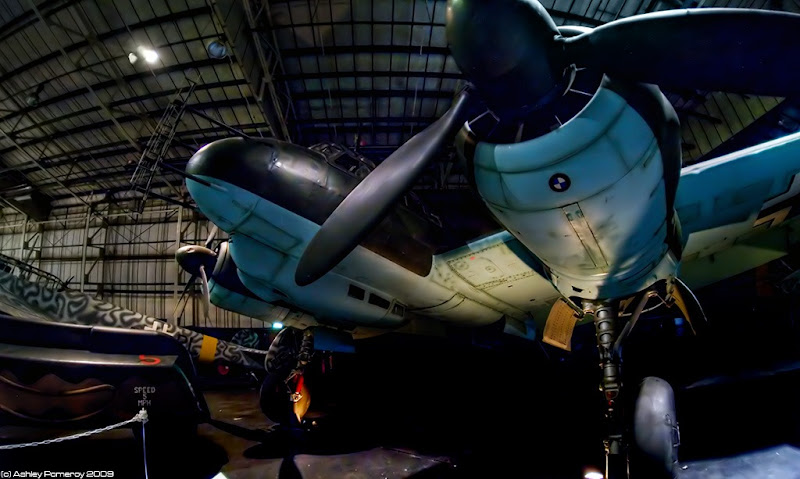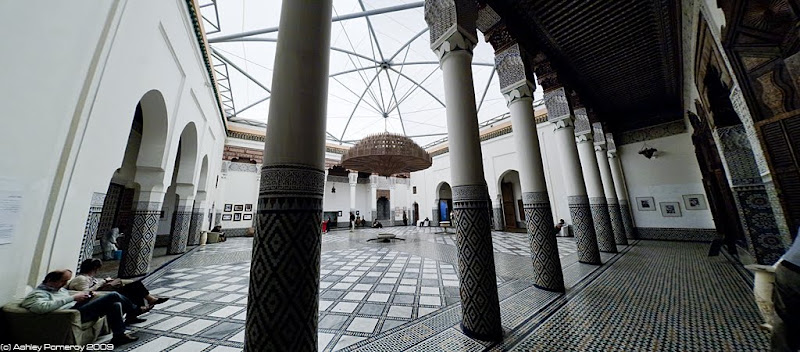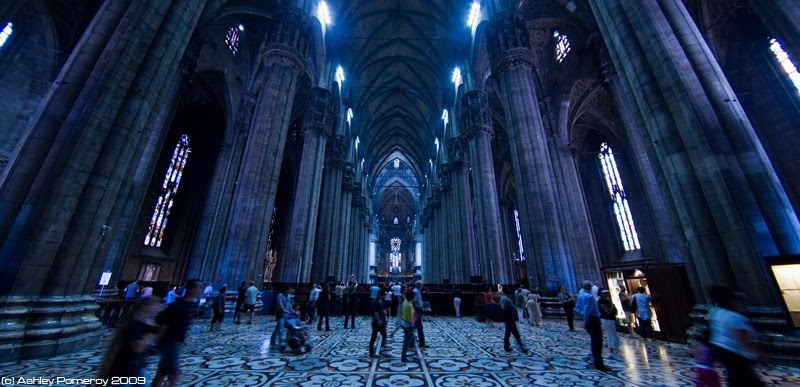
"Now the world has gone to bed
darkness won't engulf my head
I can see by infrared.
How I hate the night."
darkness won't engulf my head
I can see by infrared.
How I hate the night."
So intoned Marvin the Paranoid Android, in Douglas Adams' Life, The Universe and Everything, which was the third Hitch-Hiker's Guide to the Etc novel. It came out in 1982, an odd time for science fiction. The New Wave of the 1960s and 1970s had run out of steam, and the 1983 Hugo Awards for Best Novel were dominated by the old guard; the winner was Isaac Asimov, for the latest in his Foundation series, and the other nominees included Arthur C. Clarke and Robert Heinlein.
 And then, the next year, William Gibson - who had not even been born when Clarke, Heinlein, and Asimov had sold their first stories - won the Hugo for Neuromancer, and inadvertently begat all those cyberpunk films where people with names like Johnny Razoredge and Sally Knifeblade did kung-fu kickboxing in abandoned factories full of steam with dripping water and blue lights. Ninjas with mobile phones and Uzis. Sigue Sigue Sputnik. My generation's conception of cool.
And then, the next year, William Gibson - who had not even been born when Clarke, Heinlein, and Asimov had sold their first stories - won the Hugo for Neuromancer, and inadvertently begat all those cyberpunk films where people with names like Johnny Razoredge and Sally Knifeblade did kung-fu kickboxing in abandoned factories full of steam with dripping water and blue lights. Ninjas with mobile phones and Uzis. Sigue Sigue Sputnik. My generation's conception of cool. But I digress. This blog post isn't going to be about science fiction. Instead, it's going to be about Stereolab, the avant-garde Anglo-French retro electronic lounge pop band from the 1990s. They didn't sell any records, nobody ever talks about them nowadays, and they essentially wasted their time; but some people liked them. Nobody loved them, though. They were not a lovable band. There was never a sense that they needed or wanted support from the audience, or that they cared whether their records sold, or indeed that they cared about anything at all. The unplanned death of second vocalist Mary Hansen in 2002 highlighted the folly of an image based on total perfection and total control. It was all downhill from then on, and the band eventually split in mid 2009. In the next post I will discuss the intertwined destinies of
But I digress. This blog post isn't going to be about science fiction. Instead, it's going to be about Stereolab, the avant-garde Anglo-French retro electronic lounge pop band from the 1990s. They didn't sell any records, nobody ever talks about them nowadays, and they essentially wasted their time; but some people liked them. Nobody loved them, though. They were not a lovable band. There was never a sense that they needed or wanted support from the audience, or that they cared whether their records sold, or indeed that they cared about anything at all. The unplanned death of second vocalist Mary Hansen in 2002 highlighted the folly of an image based on total perfection and total control. It was all downhill from then on, and the band eventually split in mid 2009. In the next post I will discuss the intertwined destinies of Kodak's older digital SLRs were notoriously sensitive to infrared, in a bad way. The photographs on this page were taken with a Kodak DCS 560, one of the later models in the series, that I wrote about in the previous post. There's a photo of it here, the very same camera that I held in my strong, powerful hands. Hands that can cradle the head of a new-born baby; hands that can caress a woman's breast; hands that can crush a man's skull. The hands of a man.
Kodak's older digital SLRs were notoriously sensitive to infrared, in a bad way. The photographs on this page were taken with a Kodak DCS 560, one of the later models in the series, that I wrote about in the previous post. There's a photo of it here, the very same camera that I held in my strong, powerful hands. Hands that can cradle the head of a new-born baby; hands that can caress a woman's breast; hands that can crush a man's skull. The hands of a man. Digital sensors are typically very sensitive to infrared, and modern digital SLRs block out infrared with a filter bonded to the front of the sensor. The DCS 560 is an older design, and has two filters; a relatively weak one mounted on the sensor, and a stronger one just behind the lens mount:
Digital sensors are typically very sensitive to infrared, and modern digital SLRs block out infrared with a filter bonded to the front of the sensor. The DCS 560 is an older design, and has two filters; a relatively weak one mounted on the sensor, and a stronger one just behind the lens mount: This doubles as an anti-aliasing filter, which blurs the image slightly in order to get rid of moire interference patterns in finely-detailed textures such as hair and clothing. The filter can easily be unscrewed and taken out, which has the effect of making the images slightly sharper, with the risk of introducing infrared contamination.
This doubles as an anti-aliasing filter, which blurs the image slightly in order to get rid of moire interference patterns in finely-detailed textures such as hair and clothing. The filter can easily be unscrewed and taken out, which has the effect of making the images slightly sharper, with the risk of introducing infrared contamination. The Nikon-bodied Kodak DCS cameras had a physically different filter design which achieved the same thing, and judging by internet Kodak guru Stan Disbrow the two-megapixel Kodak DCS 520 had a plain infrared filter which didn't blur the image at all.
The Nikon-bodied Kodak DCS cameras had a physically different filter design which achieved the same thing, and judging by internet Kodak guru Stan Disbrow the two-megapixel Kodak DCS 520 had a plain infrared filter which didn't blur the image at all. Whereas the earlier Kodak DCS 460 was almost unusable as a colour camera without significant infrared filtration, the DCS 560 is much more benign; the colours are often a bit too red if the filter is not in place, but they can generally be corrected with software. As a consequence I have taken my filter out and I never use it.
Whereas the earlier Kodak DCS 460 was almost unusable as a colour camera without significant infrared filtration, the DCS 560 is much more benign; the colours are often a bit too red if the filter is not in place, but they can generally be corrected with software. As a consequence I have taken my filter out and I never use it.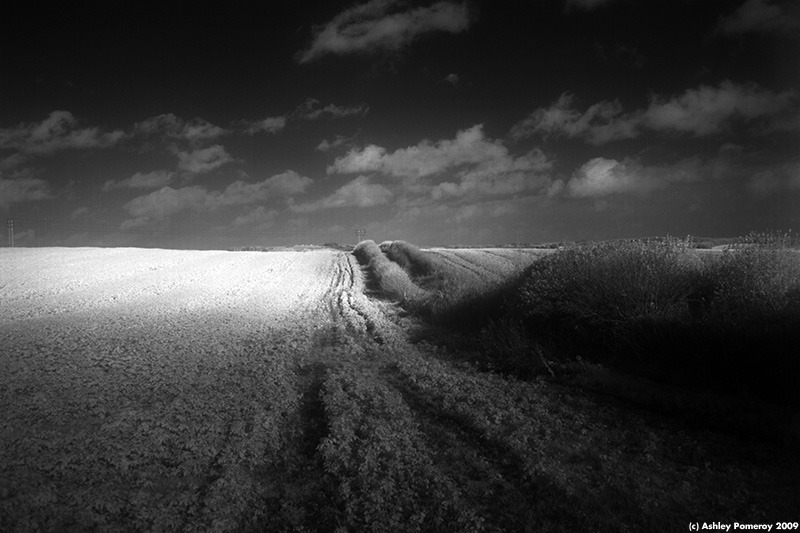 With the filter removed the camera is still usable for visible light photography. The shots of Karolina Karello in the previous post were taken without the filter, and they are mighty fine and so is she. I was curious to see how the camera would cope with infrared photography, so I obtained a few tools. Firstly, an Olympus 24mm f/2.8. This is a fast wide angle lens that is sharp at f/2.8. The DCS 560 does not cope well with longer exposures, and it has a 1.3x focal multiplication factor, so I needed the fastest, widest lens that I could get my hands on. The Canon 24mm f/1.4L or Olympus 21mm f/2 would be better choices, but they are as expensive as a holiday abroad, and I would rather have a holiday abroad.
With the filter removed the camera is still usable for visible light photography. The shots of Karolina Karello in the previous post were taken without the filter, and they are mighty fine and so is she. I was curious to see how the camera would cope with infrared photography, so I obtained a few tools. Firstly, an Olympus 24mm f/2.8. This is a fast wide angle lens that is sharp at f/2.8. The DCS 560 does not cope well with longer exposures, and it has a 1.3x focal multiplication factor, so I needed the fastest, widest lens that I could get my hands on. The Canon 24mm f/1.4L or Olympus 21mm f/2 would be better choices, but they are as expensive as a holiday abroad, and I would rather have a holiday abroad.On the DCS 560 it becomes a 31mm, which is a good all-round focal length. I used a cheap eBay Olympus OM - Canon EOS adapter. It had a focus confirmation chip, which I had to cover up with gaffer tape because it made the software in the DCS 560's EOS-1n body crash after taking a picture.
 Secondly, I got hold of a Hoya 49mm infrared filter
Secondly, I got hold of a Hoya 49mm infrared filter The lens has a distance scale, which is very useful, because infrared wavelengths do not focus in the same way as visible light. With visible light, infinity focus on the Olympus lens is at the left edge of the infinity focus mark. I can leave it there and shoot distant things at f/8 without having to bother with the focus ring at all. With infrared light, infinity focus is instead at the 6ft mark, a slight turn counterclockwise. I found this out by trial and error and also by throwing pennies in the air until they landed in a pattern that pleased me.
The lens has a distance scale, which is very useful, because infrared wavelengths do not focus in the same way as visible light. With visible light, infinity focus on the Olympus lens is at the left edge of the infinity focus mark. I can leave it there and shoot distant things at f/8 without having to bother with the focus ring at all. With infrared light, infinity focus is instead at the 6ft mark, a slight turn counterclockwise. I found this out by trial and error and also by throwing pennies in the air until they landed in a pattern that pleased me.In practice, with bright sunshine, I could take hand-held shots at f/2.8, 1/15th, ISO 80, moving to ISO 160 if necessary. At higher ISOs the camera is grainier but still captures a lot of detail, although the right edge of the image has a band of amplifier noise. The biggest problem is vertical banding, a consequence of the camera's CCD readout technology. This is most obvious in areas of flat colour, such as the sky, and cannot easily be removed from the image.
 As a camera for producing infrared exposures with hand-held shutter speeds, the DCS 560 is surprisingly good, although still vastly inferior to a custom infrared conversion from e.g. LifePixel. It does not capture a strong enough signal to reproduce the vivid colours of a dedicated infrared camera, and for tripod work it makes no sense because exposures longer than a second or so are full of hot pixels and noise. But it's a fascinating novelty nonetheless. And that's what life is all about. Fascinating novelties that distract us from the grim inevitability of death and endless nothingness.
As a camera for producing infrared exposures with hand-held shutter speeds, the DCS 560 is surprisingly good, although still vastly inferior to a custom infrared conversion from e.g. LifePixel. It does not capture a strong enough signal to reproduce the vivid colours of a dedicated infrared camera, and for tripod work it makes no sense because exposures longer than a second or so are full of hot pixels and noise. But it's a fascinating novelty nonetheless. And that's what life is all about. Fascinating novelties that distract us from the grim inevitability of death and endless nothingness.As for infrared photography in general, I suggest you wait until a sunny day that has lots of cloud cover, and then find a spot with greenery, and snap away. The clouds are there to make the sky look interesting. The greenery is there so that people can tell you're capturing infrared. Shoot RAW, and be prepared to boost the contrast like mad.
-
There's one other thing. The images on this page were converted from the original Kodak .TIF files using a piece of software called DCRaw. As Ross "Ask me about Loom" Alford at Nikonweb points out in this thread, digital SLRs tend to capture infrared as if there was no Bayer filter in front of the sensor; the coloured elements in the filter matrix pass infrared equally. DCRaw has an optional switch, -b, that will bypass the demosaicing process, and the end result appears to be an image with about a third more detail than would be produced by a standard RAW translator. The following 100% crop from one of the images above presents the output of DCRaw on the left, with the output from Adobe Camera Raw on the right:
 I have applied unsharp mask settings of 50, 0.5, 0 to both images. DCRaw's image is definitely grainier, and I cannot really tell if the relative softness of ACR's output is because of genuinely lower detail, or because ACR automatically applies noise reduction that cannot be turned off. And in practice there isn't really anything in DCRaw's output that I can't also see in ACR's output. A large wash, wax, and dry is more obviously £10, rather than what looks like €74, but that's about it. It would be interesting to compare this output with that from the monochrome-only, Bayer-less DCS 760M, but given that the 760M is a rare and expensive antique, this will have to remain an intellectual exercise.
I have applied unsharp mask settings of 50, 0.5, 0 to both images. DCRaw's image is definitely grainier, and I cannot really tell if the relative softness of ACR's output is because of genuinely lower detail, or because ACR automatically applies noise reduction that cannot be turned off. And in practice there isn't really anything in DCRaw's output that I can't also see in ACR's output. A large wash, wax, and dry is more obviously £10, rather than what looks like €74, but that's about it. It would be interesting to compare this output with that from the monochrome-only, Bayer-less DCS 760M, but given that the 760M is a rare and expensive antique, this will have to remain an intellectual exercise.Nonetheless, the combination of light processing and the lack of an antialiasing filter means the the DCS 560 (and by extension the Nikon-bodied DCS 660 and 760) are capable of producing very sharp images indeed.




